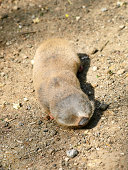Development of diagnostic markers for the detection of functional and non-functional alleles of Yr15
Main research : Prof. Tzion Fahima
Head of the Laboratory of Plant Genomics and Disease Resistance
The Department of Evolutionary and Environmental Biology, at the Institute of Evolution
Stripe rust, caused by the fungus Puccinia striiformis f.s. tritici (Pst), is a destructive disease of wheat globally. Depletion of effective resistance to Pst in cultivated wheat has led to search for new resistance genes in the wild relatives of wheat. One of the most promising genes conferring broad-spectrum resistance to stripe rust is Yr15, derived from wild emmer wheat (Triticum dicoccoides) accession G25. Yr15, mapped on chromosome arm 1BS, has recently been cloned by our consortium and designated as Wheat Tandem Kinase 1 (WTK1). We found wtk1 susceptible alleles in most 274 tested durum, bread, and wild emmer wheat lines. Out of 69 tested durum and bread wheat cultivars and lines, only 33 Yr15 introgression lines contained the functional allele (Wtk1) from G25 and were resistant to Pst. The remaining 36 susceptible lines carried non-functional alleles (wtk1), which included insertions of large transposable elements that resulted in changes in reading frame. Development of reliable molecular markers can facilitate the introgression of Yr15 into new varieties via marker-assisted selection. Diagnostic markers designed based on the polymorphism between the WTK1 alleles are preferred in order to avoid negative linkage drag. Therefore, we have designed highthroughput co-dominant KASP markers that can differentiate between the functional (Wtk1) and all known non-functional (wtk1) alleles, and can be used in breeding programs for development of modern cultivars with high resistance to stripe rust.
Related pages
Tzion Fahima, Prof.- researcher page



